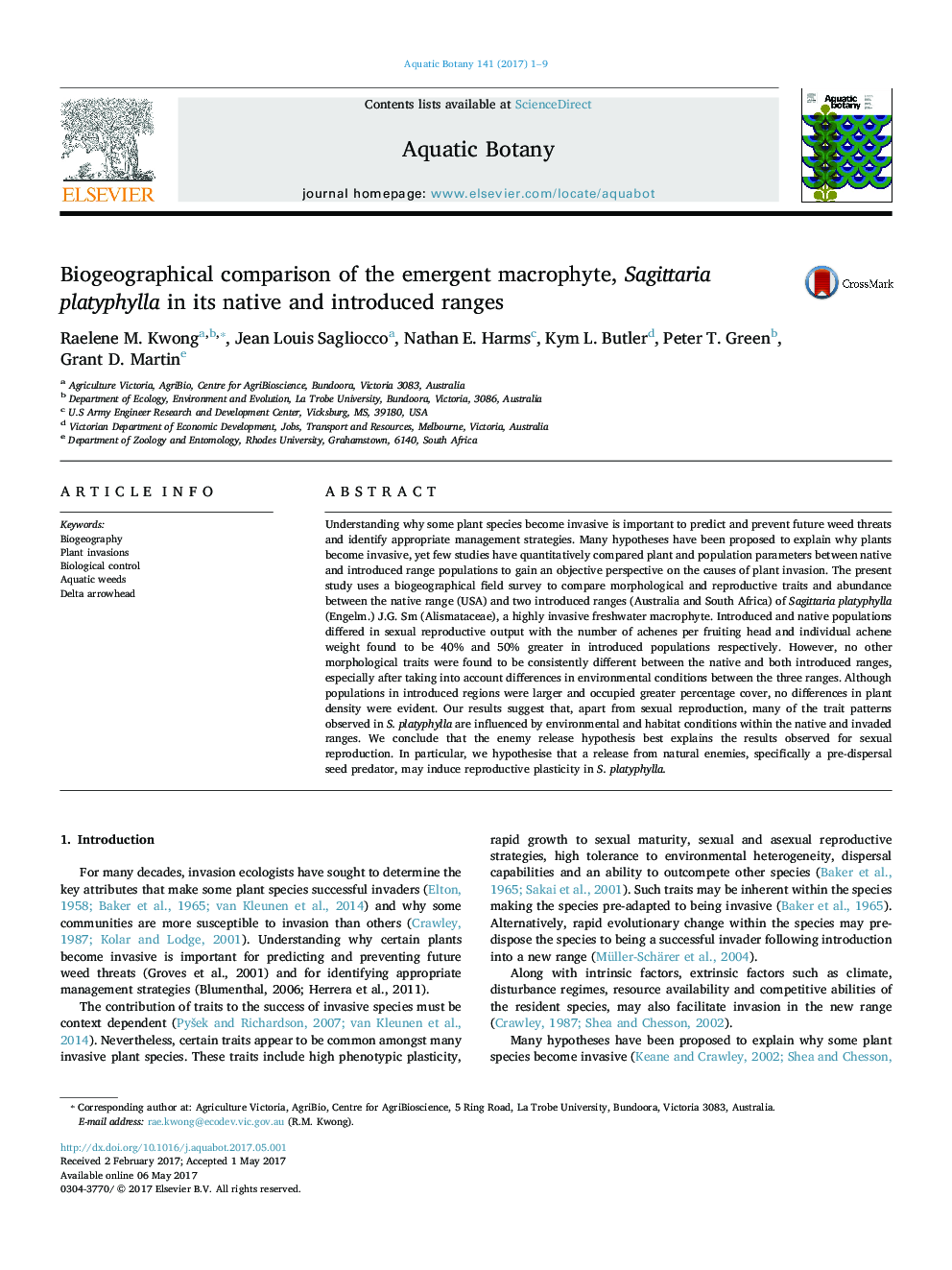| کد مقاله | کد نشریه | سال انتشار | مقاله انگلیسی | نسخه تمام متن |
|---|---|---|---|---|
| 5764009 | 1625801 | 2017 | 9 صفحه PDF | دانلود رایگان |

- Sagittaria platyphylla, native to southern USA is highly invasive in Australia and South Africa.
- We conducted a biogeographical survey to identify factors that might explain its invasion success.
- Achene production of introduced range plants was 40% greater than for native range plants.
- We hypothesise that enemy release may induce reproductive plasticity in S. platyphylla.
Understanding why some plant species become invasive is important to predict and prevent future weed threats and identify appropriate management strategies. Many hypotheses have been proposed to explain why plants become invasive, yet few studies have quantitatively compared plant and population parameters between native and introduced range populations to gain an objective perspective on the causes of plant invasion. The present study uses a biogeographical field survey to compare morphological and reproductive traits and abundance between the native range (USA) and two introduced ranges (Australia and South Africa) of Sagittaria platyphylla (Engelm.) J.G. Sm (Alismataceae), a highly invasive freshwater macrophyte. Introduced and native populations differed in sexual reproductive output with the number of achenes per fruiting head and individual achene weight found to be 40% and 50% greater in introduced populations respectively. However, no other morphological traits were found to be consistently different between the native and both introduced ranges, especially after taking into account differences in environmental conditions between the three ranges. Although populations in introduced regions were larger and occupied greater percentage cover, no differences in plant density were evident. Our results suggest that, apart from sexual reproduction, many of the trait patterns observed in S. platyphylla are influenced by environmental and habitat conditions within the native and invaded ranges. We conclude that the enemy release hypothesis best explains the results observed for sexual reproduction. In particular, we hypothesise that a release from natural enemies, specifically a pre-dispersal seed predator, may induce reproductive plasticity in S. platyphylla.
547
Journal: Aquatic Botany - Volume 141, July 2017, Pages 1-9